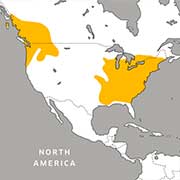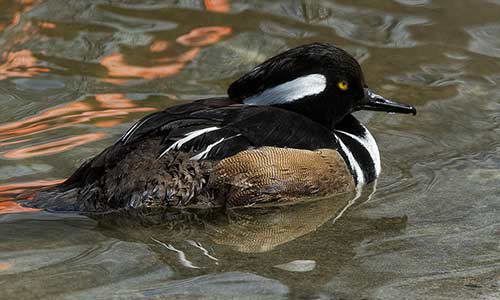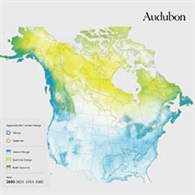-
-
Home
Franklin Park Zoo
Stone Zoo
-
Home
-
Visit
Tickets & Membership
-
Discover
Programs & Education
-
Protect
Conservation
- Protect
-
Here in New England
- Here in New England
-
Join the Conservation Society
-
Turtle Conservation
-
Amphibian Conservation
- Franklin Park Biodiversity Project
- New England Blazing Star and Native Pollinators
- Fish Conservation
- Protecting Habitats with the Motus Wildlife Tracking System
- Boston Area City Nature Challenge
- Make a Donation
-
Around the Globe
- Around the Globe
- One Health in Madagascar
- Snow Leopard Conservation
- Cross-River Gorilla Conservation
- Hicatee Turtle Conservation
- Panama Amphibian Rescue and Conservation Project
- Northern Jaguar Conservation
- African Lion Conservation
- African Painted Dog Conservation
- Mexican Gray Wolf Conservation
- Giraffe Conservation
- Baird's Tapir Conservation
- Short-tailed Chinchilla Conservation
- Cuban Solenodon Conservation
- BirdsCaribbean: Conserving Migratory Birds
- Kori Bustard and Kiwi Conservation
- Northern White-Cheeked Gibbon Conservation
- Sabin Snow Leopard Grants Program
- Graduate Scholarship Program
- Wildlife Trafficking Alliance: Be Informed. Buy Informed.
-
Inside our Zoos
-
What You Can Do
-
Celebrate
Parties & Private Events
-
Act
Support Your Zoos
- Act
- Make a Donation
-
Ways to Give
- Ways to Give
- The African Experience
- Red Panda Conservation Complex
- ZNE License Plate
- Corporate Support
- Foundation Support
- Mural Project: Handle with Care
- Honor/Memorial Gifts
- Jonathan Gilmour Memorial Scholarship Fund
- Leave a Legacy
- Louise Felton Zookeepers’ Memorial Fund
- Matching Gifts
- Oral Health Care Among Species Program
- President's Circle
- Shop our Wishlist
- Sponsor a Bench
- Support our Field Conservation Department
- Zoodopt
- The Wild Things Membership
- Zoodopt an Animal
- Annual Reports & Financial Statements
- Contact Us
-
Engage
Special Events
- Give Now: All For Our Animals
-
About Us
-
Jobs & Volunteering
- Zoo News
- Conservation Blog
- Kids' Corner
- Media
- Contact Us
- Accessibility Statement
- Sitemap
-
Franklin Park Zoo
- Buy Tickets
- Hours, Info & FAQ
- Map
-
Our Animals
- Our Animals
-
Mammals
- African Lion
- African Painted Dog
- Bactrian Camel
- Baird's Tapir
- Black-Tailed Prairie Dog
- Cape Porcupine
- Cotton-Top Tamarin
- De Brazza's Monkey
- Dexter Cow
- Giant Anteater
- Guinea Hog
- Hartmann’s Mountain Zebra
- Linne’s Two-toed Sloth
- Lowland Nyala
- Masai Giraffe
- Morgan Horse
- Nigerian Dwarf Goat
- Poitou Donkey
- Potto
- Pygmy Hippopotamus
- Red Kangaroo
- Red Panda
- Red River Hog
- Red-necked Wallaby
- Reeves's Muntjac
- Ring-Tailed Lemur
- Ruwenzori Fruit Bat
- Sardinian Dwarf Donkey
- Somali Wild Ass
- Spotted Hyena
- Straw-Colored Fruit Bat
- Warthog
- Western Grey Kangaroo
- Western Lowland Gorilla
- White-Bearded Wildebeest
-
Reptiles & Amphibians
-
Birds
- African Pygmy Falcon
- Andean Condor
- Azure-Winged Magpie
- Baikal Teal
- Bali Mynah
- Barn Owl
- Barrow's Goldeneye
- Black Crake
- Black Swan
- Black-Naped Fruit Dove
- Boat-Billed Heron
- Bourke's Parrot
- Brown Kiwi
- Budgerigar
- Bufflehead Duck
- Cabot’s Tragopan
- Canvasback
- Citron-Crested Cockatoo
- Eastern Screech Owl
- Emu
- Golden Pheasant
- Gouldian Finch
- Hadada Ibis
- Hamerkop
- Heritage Chicken
- Hooded Crane
- Hooded Merganser
- Indian Blue Peafowl
- Kea
- Kookaburra
- Kori Bustard
- Madagascar Sacred Ibis
- North American Wood Duck
- Northern Shoveler
- Orange Bishop
- Ostrich
- Red-Breasted Goose
- Red-Breasted Merganser
- Red-Crested Turaco
- Ringed Teal
- Saddle-Billed Stork
- Scaly-Sided Merganser
- Steller’s Sea Eagle
- Sunbittern
- Tawny Frogmouth
- Wattled Crane
- White-Naped Crane
- Yellow-Billed Stork
- Yellow-Rumped Cacique
-
Fish
-
Insects & Spiders
-
Exhibits
- Winter Visits
- What's Happening
- Attractions
- Shopping and Dining
- Behind-the-Scenes Tours
-
Stone Zoo
- Buy Tickets
- Hours, Info & FAQ
- Map
-
Our Animals
- Our Animals
-
Mammals
- Black Bear
- Bush Dog
- Canada Lynx
- Chacoan Peccary
- Coati
- Colobus Monkey
- Cotton-Top Tamarin
- Jaguar
- Linne’s Two-toed Sloth
- Markhor
- Mexican Gray Wolf
- North American Porcupine
- North American River Otter
- Nubian Goat
- Prehensile-Tailed Porcupine
- Red-Rumped Agouti
- Reindeer
- Ringtail
- Rock Hyrax
- Seba’s Short-Tailed Bat
- Snow Leopard
- Southdown Sheep
- White-Cheeked Gibbon
- Yak
-
Reptiles & Amphibians
-
Birds
- Insects, Spiders & Crustaceans
-
Exhibits
- Winter Visits
- What's Happening
- Attractions
- Shopping and Dining
- Behind-the-Scenes Tours

© 2024 Commonwealth Zoological Corporation dba Zoo New England, All Rights Reserved




